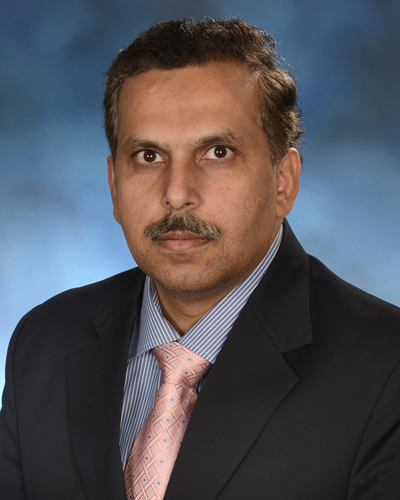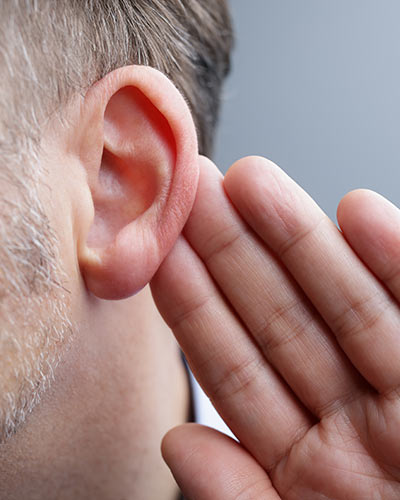August 03, 2017 | Larry Roberts

Study Pinpoints a Mechanism Behind Some Deafness
Researchers at the University of Maryland School of Medicine (UM SOM) today announced a breakthrough discovery that could eventually help scientists repair hearing problems or protect those at risk for hearing loss – a condition that affects some 40 million Americans.
In particular, with 74,000 children currently affected by profound, early-onset deafness, scientists have been trying to solve the mystery of what causes hearing disorders, especially those that may have genetic causes.
Now, the new UM SOM study, has identified a crucial protein in the process that turns sound waves into brain signals. The new understanding could eventually help repair or prevent hearing problems for those with the highest risk.
The findings were published recently in the Nature Communications. The study is the first to illuminate in detail how the protein, known as CIB2, enables hearing.
“We are very excited by these results", said the senior author of the study, Zubair Ahmed, PhD, Professor in the Department of Otorhinolaryngology-Head and Neck Surgery at UM SOM. "This tells us something new about the fundamental biology of how hearing works on a molecular level.”
CIB2, which is short for calcium and integrin-binding protein 2, is essential for the structure of stereocilia, the structures at the top of the sensory hair cells in the inner ear. Stereocilia are extremely small, less than a half a micrometer in diameter, which is about the wavelength of a visible light. Each ear contains 18,000 hair cells that do not divide or regenerate.

Saima Riazuddin, PhD, MPH, MBA
Dr. Ahmed and his colleague Saima Riazuddin, PhD, Professor in the Department of Otorhinolaryngology-Head and Neck Surgery at UM SOM, along with their collaborators, discovered five years ago that CIB2 was involved in hearing. Since then, they have studied the protein in flies, mice, zebrafish and humans. The new study is the first to explain the mechanism behind CIB2 in hearing.
In this study, they genetically engineered mice without CIB2, as well as mice in which a human CIB2 gene mutation had been inserted. The researchers found that the human mutation affects the ability of the CIB2 protein to interact with two other proteins, TMC1 and TMC2, which are crucial for converting sound to electrical signals, a process known as mechanotransduction.
People with this mutation cannot turn soundwaves into signals the brain can interpret, and so are deaf. When the researchers inserted the human CIB2 mutation into the mouse, they found that the mice were deaf.
“This is a big step in determining the identity of key components of the molecular machinery that converts sound waves into electrical signals in the inner ear,”said the study’s co-senior author, Gregory Frolenkov, PhD, of the Department of Physiology at the University of Kentucky.
Dr. Ahmed and his colleagues are now looking for other molecules beyond CIB2 that play a key role in hearing. In addition, they are exploring potential therapies for CIB2-related hearing problems. In mice, they are using the gene editing tool CRISPR to modify dysfunctional CIB2 genes. They suspect that if this modification occurs in the first few weeks after birth, these mice, which are born deaf, will be able to hear. The scientists are also experimenting with gene therapy, using a harmless virus to deliver a copy of the normal CIB2 gene to baby mice that have the mutated version. Dr. Ahmed says the early results of these experiments are intriguing.
It is not clear how common CIB2 mutations are in the US population, or how large a role these mutations play in deafness in humans worldwide. In his research on a group of families in Pakistan that have a higher risk of deafness, Dr. Ahmed has found that about 8 to 9 percent seem to have mutations in CIB2. Overall, he says, the gene could play a role in tens of thousands of cases of deafness, and perhaps many more than that. He is also studying CIB2 among the general population. It may be that some versions of the gene also play a role in deafness caused by environmental conditions, creating a predisposition to hearing loss.
Arnaud Giese, PhD, a Post-Doctoral Fellow at UM SOM, and Yi-Quan Tang, PhD, from Cambridge University in England, are co-authors of this study. Other significant contributors include Dr. Riazuddin, William Schafer, PhD, from Cambridge University, Steve S.D. Brown, PhD, from the MRC Harwell Institute, UK, and Robert Fettiplace, PhD, from the University of Wisconsin.
“Hearing loss and deafness remain major physiological and sociological problems, with enormous economic and emotional costs,” said UM SOM Dean E. Albert Reece, MD, PhD, MBA, who is also the vice president for Medical Affairs, University of Maryland, and the John Z. and Akiko K. Bowers Distinguished Professor. “This innovative work by Dr. Ahmed and his colleagues opens a key molecular window that could lead to the development of cutting-edge translational treatments in the future.”
About the University of Maryland School of Medicine
Commemorating its 210th Anniversary, the University of Maryland School of Medicine was chartered in 1807 as the first public medical school in the United States. It continues today as one of the fastest growing, top-tier biomedical research enterprises in the world -- with 43 academic departments, centers, institutes, and programs; and a faculty of more than 3,000 physicians, scientists, and allied health professionals, including members of the National Academy of Sciences, and a distinguished recipient of the Albert E. Lasker Award in Medical Research. With an operating budget of more than $1 billion, the School of Medicine works closely in partnership with the University of Maryland Medical Center and Medical System to provide research-intensive, academic and clinically-based care for more than 1.2 million patients each year. The School has over 2,500 students, residents, and fellows, and nearly $450 million in extramural funding, with more than half of its academic departments ranked in the top 20 among all public medical schools in the nation in research funding. As one of the seven professional schools that make up the University of Maryland, Baltimore campus, the School of Medicine has a total workforce of nearly 7,000 individuals. The combined School and Medical System (“University of Maryland Medicine”) has a total budget of $5 billion and an economic impact of nearly $15 billion on the state and local community. The School of Medicine faculty, which ranks as the 8th-highest public medical school in research productivity, is an innovator in translational medicine with 600 active patents and 24 start-up companies. The School works locally, nationally, and globally, with research and treatment facilities in 36 countries around the world. Visit medschool.umaryland.edu
Learn More
• UM SOM Department of Otorhinolaryngology-Head and Neck Surgery
Contact
Department of Anesthesiology
(410) 328-6120 (phone)
(410) 328-5531 (fax)
newsletter@som.umaryland.edu
University of Maryland School of Medicine
Larry Roberts
Web Communications
410-706-4939
lroberts@som.umaryland.edu
Related stories

Wednesday, September 30, 2020
UM School of Medicine Researchers Identify Role of Crucial Protein in Development of New Hair Cells Needed for Hearing
Researchers at the University of Maryland School of Medicine (UMSOM) have conducted a study that has determined the role that a critical protein plays in the development of hair cells. Researchers at the University of Maryland School of Medicine (UMSOM) have conducted a study that has determined the role that a critical protein plays in the development of hair cells.

Thursday, April 20, 2017
University of Maryland School of Medicine Researcher Discusses the Genetics of Hearing Loss at National Otorhinolaryngology Conference
As a keynote speaker at the recent Association for Research in Otolaryngology conference in Baltimore, Ronna P. Hertzano, MD, PhD, Assistant Professor of Otorhinolaryngology-Head & Neck Surgery at the University of Maryland School of Medicine (UM SOM), discussed innovative ways to study hearing loss – a condition that affects nearly 40 million Americans.
